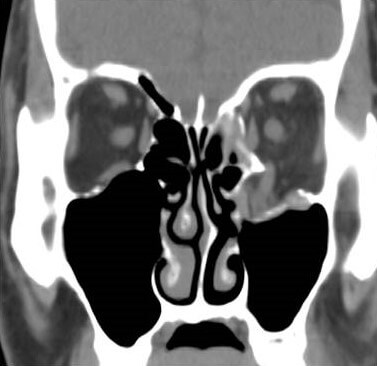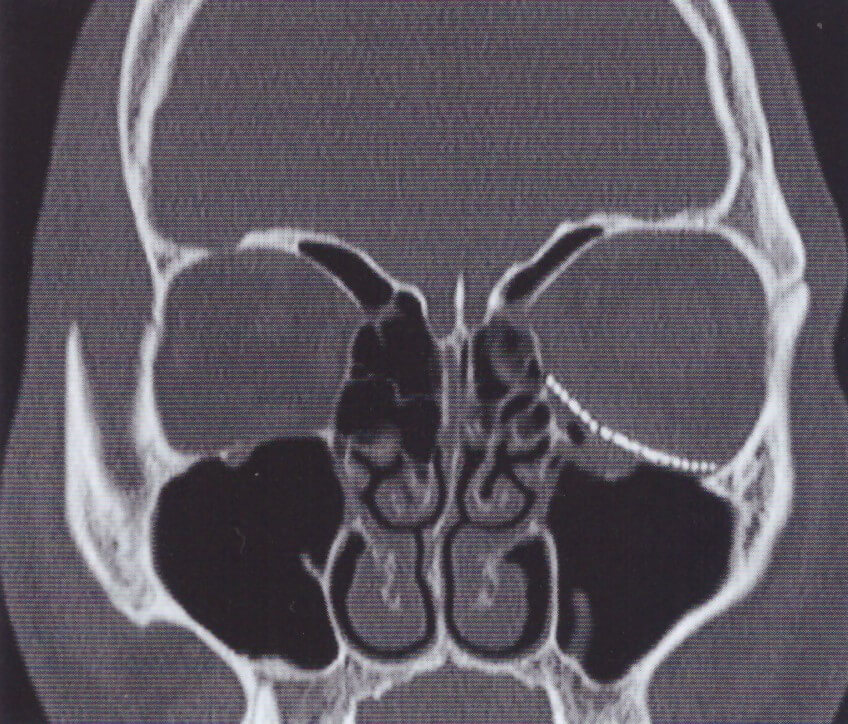
-
What Is an orbital fracture
The eye socket is a bony opening that surrounds and protects the eye. The rim of the socket is made of fairly thick bones, while the floor and inner wall of the socket is mostly paper thin. An orbital fracture is a broken bone in the eye socket involving the rim, the floor or both.
-
Orbital fracture types
Orbital rim fracture
These are caused by a direct impact to the face, most commonly by car accidents. Because a great deal of force is required to cause these fractures, they often occur with extensive injuries to other facial bones. Even if the damage is limited to the eye area, there may be additional injuries to the eye itself or the optic nerve.
Indirect orbital fracture (blowout fracture)
This occurs when the bony rim of the eye remains intact, but the paper thin floor or inner wall of the eye socket breaks. A crack in the very thin bone that makes up these walls can trap parts of the eye muscles and surrounding structures keeping the eyeball from moving properly thus causing double vision. Getting hit with a baseball or a fist often causes a blowout fracture.
Direct orbital floor fracture
A blow to the rim of the eye socket pushes the bones back, which causes the bones of the orbit floor to buckle downward. In elderly people, these breaks may result from a fall that causes their cheek to hit a piece of furniture or other hard surface.

-
Orbital fractures and symptoms
Symptoms vary depending on the severity of the injury and the type of fracture, but can include:
- Bruising and swelling around the eye
- Blood in the white part of the eye
- Double vision, decreased vision or blurry vision
- Difficulty looking up, down, right or left
- Numbness in the injured side of the face
- Flattened cheek
- Sunken eyeball
- Intense cheek pain when opening the mouth
-
Orbital fractures and diagnosis
To check for an orbital fracture, Dr Mavrikakis will examine the eye and the area around it.
He will check to see if the eye moves as it should, and if there are any vision problems, including double vision. He might also measure the eye to see if it is positioned properly in the eye socket.
If the examination suggests you have an eye socket fracture, Dr Mavrikakis will confirm the diagnosis with a computed tomography (CT) scan of the area around your eye.


-
Orbital fractures and treatment
Treatment depends on the severity and location of your injury. For a small, uncomplicated blowout fracture that does not affect the movement of your eye, Dr Mavrikakis may prescribe ice packs, decongestants and an antibiotic to prevent infection.
During this time you should avoid sneezing or blowing your nose and should not fly in an airplane or go deep-sea diving. These activities may allow air to enter the orbit, causing further discomfort and damage.
Dr Mavrikakis will usually determine whether an operation is needed within two weeks after injury. The most common reasons to consider surgery are bothersome double vision, nausea or severe pain with eye movement, or a visibly sunken eye.
The following implants have been used to reconstruct the orbital wall:
- Autogenous materials (eg, bone, cartilage)
- Alloplastic materials
1. Non absorbable - titanium, silicon, porous polyethylene and teflon
2. Absorbable - polydioxanone, polylactide and polyglactin - Allogenic dura
All implants have advantages and disadvantages, and the choice of implant is usually determined by the preference of the surgeon and patient.
The operation is performed under general anesthesia and depending on the situation, patients may go home after surgery or stay overnight in the hospital for observation.
Most patients are swollen and bruised for several days after the operation and even though the eye is not usually bandaged, vision may be blurry for several days.
Cold compresses, antibiotic and/or anti-inflammatory medication may be prescribed. Some patients may have numbness across the cheek that usually improves over time.
Most patients may return to work or school within a week, but it is preferable to limit full strenuous activity, airplane travel and deep sea diving for several weeks after the operation.
Eyelid, Lacrimal & Orbital Diseases
Learn more about the disease you are interested in

